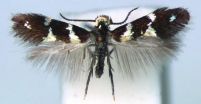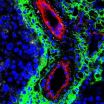(Press-News.org) A large-scale genomic study conducted in Bangladesh has discovered genetic variants that control arsenic metabolism and elevate the risk of skin lesions in people chronically exposed to arsenic. In PLoS Genetics, researchers from the University of Chicago, Columbia University, the International Center for Diarrheal Disease Research in Bangladesh, and the University of North Carolina report that genetic variants found near the enzyme for metabolizing the chemical into a less toxic form are associated with an individual's risk of developing arsenic-related disease.
Since the installation of hand-pumped wells to tap groundwater sources in the 1970s, as many as 77 million people – about half the population of Bangladesh – have been accidentally exposed to dangerous levels of arsenic. The World Health Organization calls the exposure "the largest mass poisoning of a population in history" (WHO, 2000).
For over a decade, Habibul Ahsan and colleagues have studied the epidemiology of arsenic-related diseases such as skin lesions, diabetes, and cardiovascular and respiratory illnesses in this population, as well as the effectiveness of interventions to prevent toxicity. In this new study, nearly 3,000 Bangladeshis were genotyped for variants throughout the genome, in a search for answers as to why some individuals appear to be at higher risk for developing disease after arsenic exposure.
The research team found genetic variants associated with arsenic metabolite levels and skin lesion risk in the region of a likely candidate gene: arsenite methyltransferase, an enzyme critical for arsenic metabolism. A study of gene expression levels found that those same variants were associated with reduced expression of the enzyme. Boosting arsenic metabolism may be an effective intervention in individuals exposed to the toxin and at high genetic risk from arsenic-related disease.
"These results add clarity to the genetic architecture that is playing a role in the arsenic toxicity and its underlying biological basis," said Ahsan. "It's an important study for a major problem affecting millions of people around the world, and it opens up opportunities for genetic studies of other major public health problems in developing countries."
###
FINANCIAL DISCLOSURE: This work was supported by NIH Grants P42ES010349, R01CA102484, R01CA107431, and P30CA014599 and by Department of Defense grant W81XWH-10-1-0499. The funders had no role in study design, data collection and analysis, decision to publish, or preparation of the manuscript.
COMPETING INTERESTS: The authors have declared that no competing interests exist.
CITATION: Pierce BL, Kibriya MG, Tong L, Jasmine F, Argos M, et al. (2012) Genome-Wide Association Study Identifies Chromosome 10q24.32 Variants Associated with Arsenic Metabolism and Toxicity Phenotypes in Bangladesh. PLoS Genet 8(2): e1002522. doi:10.1371/journal.pgen.1002522
CONTACT:
Habibul Ahsan
University of Chicago
Health Studies, Medicine and Human Genetics and Cancer Research
AMB N102A (MC 2007)
5841 South Maryland Avenue,
Chicago, Illinois 60637
UNITED STATES
PHONE: 773-834-9956
FAX: 773-834-0139
EMAIL: habib@uchicago.edu
Disclaimer
This press release refers to an upcoming article in PLoS Genetics. The release is provided by journal staff, or by the article authors and/or their institutions. Any opinions expressed in this release or article are the personal views of the journal staff and/or article contributors, and do not necessarily represent the views or policies of PLoS. PLoS expressly disclaims any and all warranties and liability in connection with the information found in the releases and articles and your use of such information.
About PLoS Genetics
PLoS Genetics (http://www.plosgenetics.org) reflects the full breadth and interdisciplinary nature of genetics and genomics research by publishing outstanding original contributions in all areas of biology. All works published in PLoS Genetics are open access. Everything is immediately and freely available online throughout the world subject only to the condition that the original authorship and source are properly attributed. Copyright is retained by the authors. The Public Library of Science uses the Creative Commons Attribution License.
About the Public Library of Science
The Public Library of Science (PLoS) is a non-profit organization of scientists and physicians committed to making the world's scientific and medical literature a freely available public resource. For more information, visit http://www.plos.org.
When one fish gets injured, the rest of the school takes off in fear, tipped off by a mysterious substance known as "Schreckstoff" (meaning "scary stuff" in German). Now, researchers reporting online on February 23 in the Cell Press journal Current Biology have figured out what that scary stuff is really made of.
Within that chemical brew is a special type of sugar found in abundance in fish skin. When a fish is wounded, fragments of the sugar known as chondroitin sulfate alarm other fish nearby.
"Our results provide a solution to a 70-year-old puzzle: the nature of ...
LA JOLLA, Calif., February 23, 2012 – Researchers at Sanford-Burnham Medical Research Institute (Sanford-Burnham) and the Medical School of Hannover in Germany recently discovered how the botulinum neurotoxin, a potential bioterrorism agent, survives the hostile environment in the stomach on its journey through the human body. Their study, published February 24 in Science, reveals the first 3D structure of a neurotoxin together with its bodyguard, a protein made simultaneously in the same bacterium. The bodyguard keeps the toxin safe through the gut, then lets go as the ...
It's 2012, which for the plastic surgery industry means more advancements than ever before.
While groundbreaking technology and the emergence of new surgical techniques are exciting, potential patients should be sure that these innovations are time-tested before seriously considering them. A tummy tuck surgeon in Birmingham, Dr. Michael Beckenstein, stresses that patients should choose a surgeon based on the doctor's qualifications and experience with a particular procedure, and not just because he or she offers the "latest and greatest" treatments.
"As ...
When Sifrhippus, the earliest known horse, first appeared in the forests of North America more than 50 million years ago, it would not have been mistaken for a Clydesdale. It weighed in at around 12 pounds -- and it was destined to get much smaller over the ensuing millennia.
Sifrhippus lived during the Paleocene-Eocene Thermal Maximum, a 175,000-year interval of time some 56 million years ago in which average global temperatures rose by about 10 degrees Fahrenheit, caused by the release of vast amounts of carbon into the atmosphere and oceans.
About a third of mammal ...
One of the first large-scale genomic studies conducted in a developing country has discovered genetic variants that elevate the risk for skin lesions in people chronically exposed to arsenic. Genetic changes found near the enzyme for metabolizing the chemical into a less toxic form can significantly increase an individual's risk for developing arsenic-related disease.
The discovery could point the way to new screening and intervention options for people who are exposed to groundwater with high levels of arsenic, said scientists at the University of Chicago Medicine, Columbia ...
Since in 2006 an unknown leafmining moth was found in North Italian vineyards by Mario Baldessari and colleagues, often in great numbers, scientists have tried to put a name to this apparently new invader. Italian scientists from the Fondazione Edmund Mach di San Michele all'Adige and the Università di Padova turned for help to taxonomists in the Netherlands and United States. The new species was described in the open access journal ZooKeys.
The family to which the moth belongs, the shield bearing leafminers (Heliozelidae) appeared to be poorly studied in North America, ...
Global Gaming Events launches another whopping $5,000 casino freeroll tournament with Casino Titan to be held in March 2012.
This event runs on Saturday, March 3rd, 2012 3pm ET to Sunday, March 4th, 2012 3pm ET. All players who have made at least one deposit or reload of a minimum of $50 during the month of February 2012 are eligible to play. Players must also pre-register for the event with Global Gaming Events to be eligible.
The tournament formats will be a 10 minute 5,000 Starting Chip Slot Tournaments and will have a maximum of 1000 players. Each player will ...
Researchers at the EPFL have identified an important mechanism that could lead to the design of more effective cancer vaccines. Their discovery of a new-found role of the lymphatic system in tumour growth shows how tumours evade detection by using a patient's own immune system.
Tumour cells present antigens or protein markers on their surfaces which make them identifiable to the host immune system. In the last decade, cancer vaccines have been designed that work by exposing the patient's immune cells to tumour-associated antigens and so priming them to kill cells that ...
Sani Beach Club is situated on its own stretch of private beach within Sani Resort on the beautiful Kassandra peninsula in Halkidiki, Northern Greece.
New Dining Options
There are three exceptional restaurants at Sani Beach Club - Dunes, Olympos and Ouzerie, each has redesigned its menu to offer guests a more traditional Greek gourmet experience. The new menu at Ouzerie has an innovative new twist that is similar to Sani Resort's famous new-age Greek restaurant Tomata. There will be a new Greek themed breakfast menu offering guests traditional morning specialities ...
Plants often regarded as common weeds such as thistles, buttercups and clover could be critical in safe guarding fragile food webs on UK farms according to Researchers funded by the Biotechnology and Biological Sciences Research Council (BBSRC).
Published tomorrow in Science, researchers from the University of Bristol detail the interactions that occur between the different food webs commonly found on farms throughout the UK and the robustness of these interactions to species loss. In one of the first studies to look simultaneously at multiple types of food webs, the researchers ...





